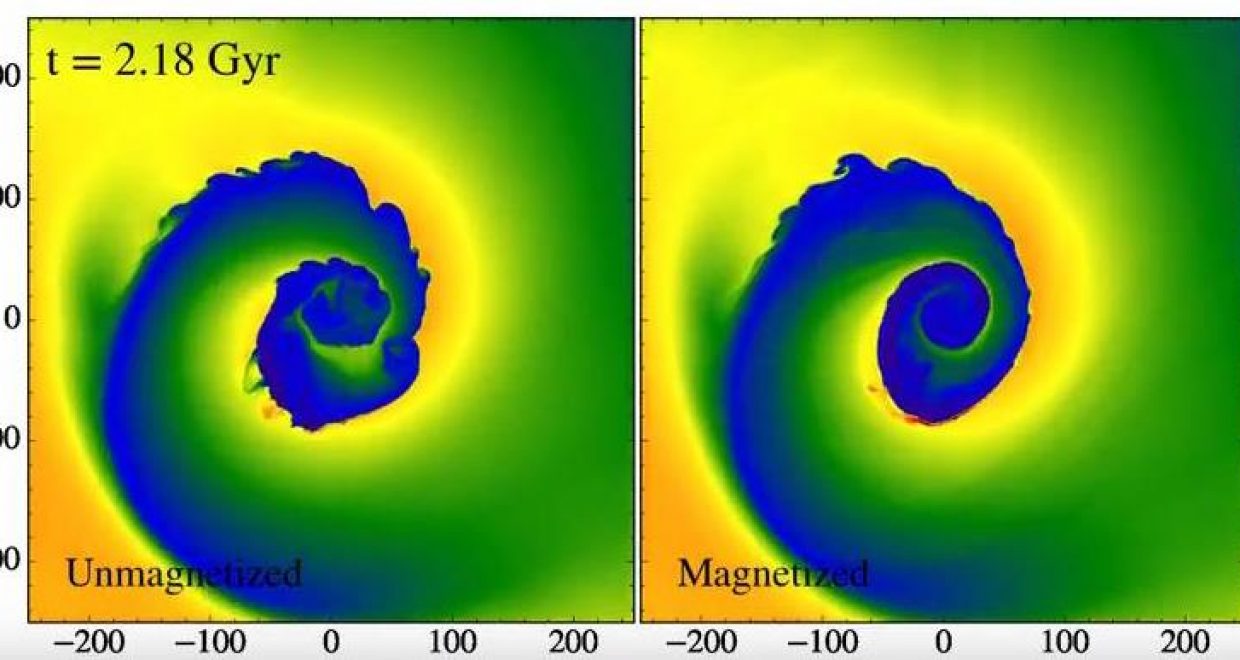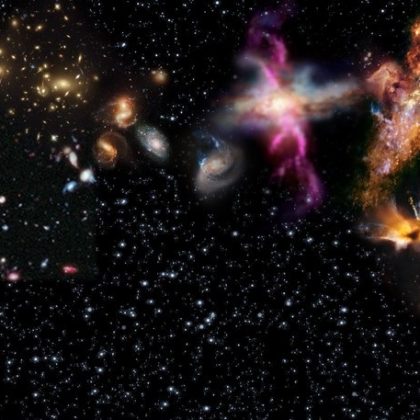First multimedia PDF published in Journal of Plasma Physics
In this blog post John ZuHone and Elke Roediger discuss their co-authored paper Cold fronts: probes of plasma astrophysics in galaxy clusters, the first article published as a multimedia pdf in the Journal of Plasma Physics.
Clusters of galaxies, which are massive structures of stars, hot plasma, and dark matter, are among the most interesting objects in the universe. Mergers between galaxy clusters represent the latest stage of cosmological structure formation, and play a crucial role in shaping the characteristics of clusters which are observed by astronomers.
A galaxy cluster merger is a very dynamic event from the perspective of the cluster’s hot plasma atmosphere: it drives shocks, forms cold fronts, amplifies magnetic fields, and stirs turbulence. Capturing the essential features of this evolution is key to a successful presentation of the results of any simulation study of galaxy cluster mergers. This usually requires the publication of many figures within a given journal article, showing the evolution of the density, temperature, magnetic field, and other quantities over many epochs of the merger.
However, it is often difficult for static figures to do justice to the full complexity of the interaction, since of necessity one is constrained by the desire of brevity to only show a small fraction of the simulation snapshots that are available. In contrast, in presentations at conferences we opt for showing animations, which allow the audience to have a firmer grasp on the stages of the merger and the chain of causality which leads to the panoply of features seen in the cluster plasma. Even as experienced simulators, we gain deeper insights from watching the temporal evolution of a merger in an animation, building intuition for the relative timescales of various processes.
Including these same multimedia elements within refereed journal publications leverages these same advantages while adding the additional benefit of interactivity. The reader is able to start and stop the animation at will, and even go in reverse, focusing on particular aspects of the evolution that they find interesting or require more examination. The ability to follow the timeline of the merger in an interactive way facilitates a deeper understanding of the simulation itself, and leads in a natural way to connecting the theoretical interpretation offered by the simulation to actual observations of merging clusters.
In our recent paper in the Journal of Plasma Physics, we showed several animations of galaxy mergers and the movement of plasma structures within clusters. Beyond merely showing the general features of the evolution of the plasma structures, we also compared simulations with different underlying physical models side by side, showing how small differences in the input physics can lead to dramatic differences in the observed effects.
Adding multimedia to a journal article such as ours really adds a new dimension to the presentation of our research, and we definitely believe that other researchers should avail themselves of this opportunity afforded by the Journal of Plasma Physics.
Read the paper Cold fronts: probes of plasma astrophysics in galaxy clusters for free until 1st September 2016.
Main image: Comparison of simulations of gas sloshing with and without magnetic fields. Panels show slices of gas temperature. Figure 15 from Cold fronts: probes of plasma astrophysics in galaxy clusters by John A. ZuHone and E. Roediger.





